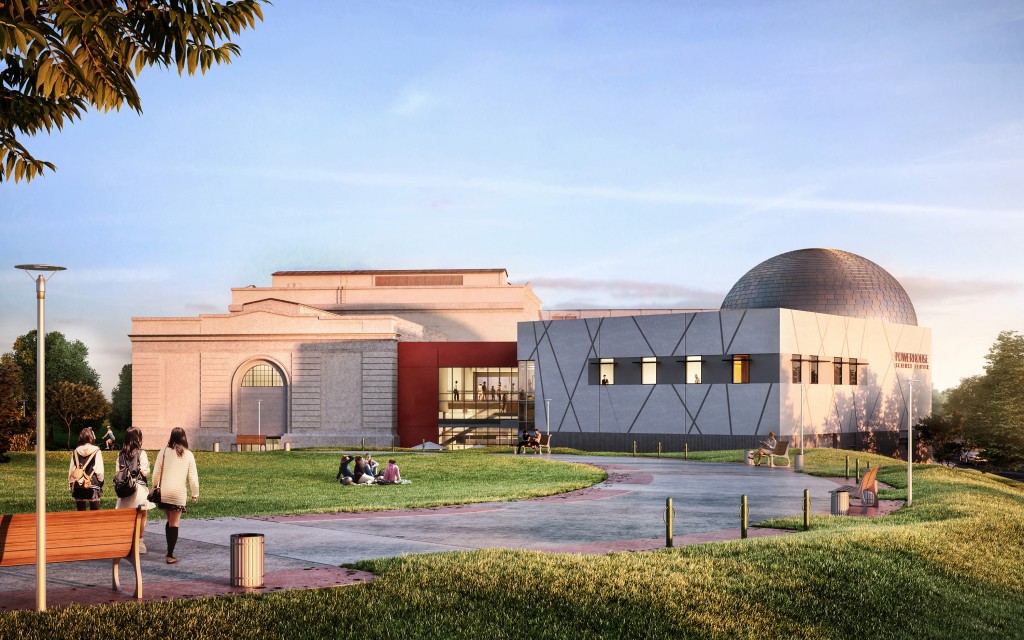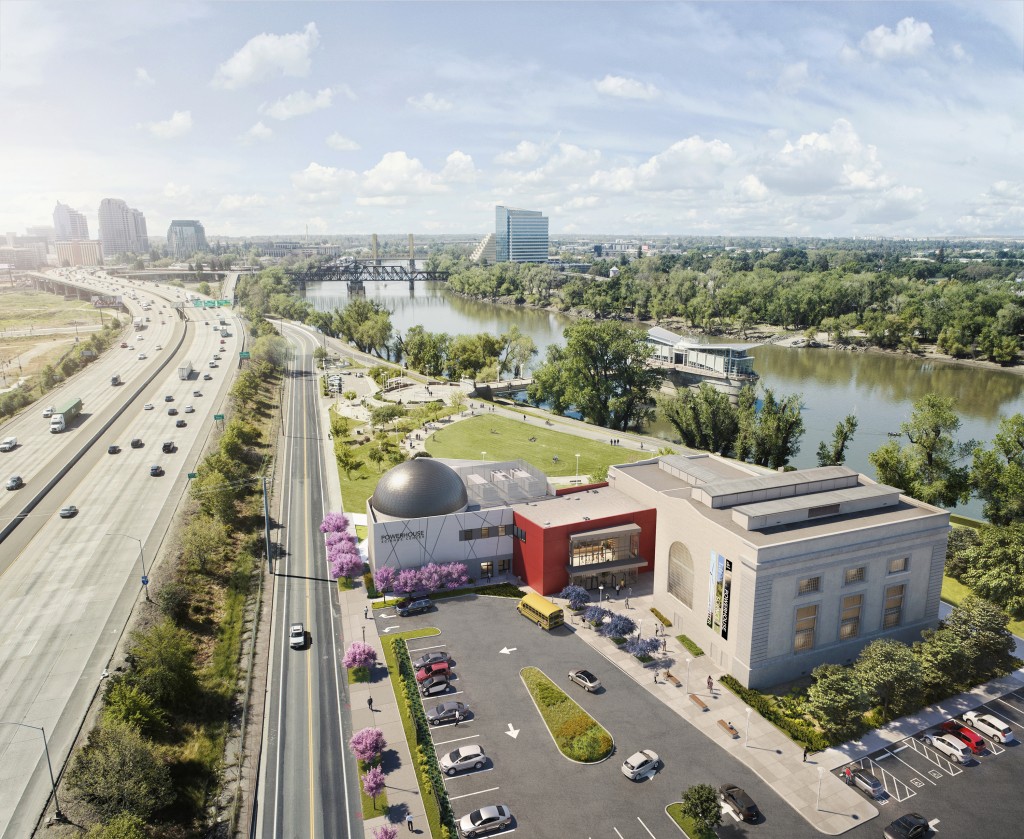Powerhouse Science Center to Transform Sacramento Waterfront
July 21, 2018
From the July 2018 issue of
Comstock’s Magazine.
By Debra Belt
Principal architect Jason Silva, of Dreyfuss + Blackford Architecture, conceptualized the facade of the new Powerhouse Science Center in Sacramento to represent humanity’s place in the universe. The facade will be sectioned by multiple planes, creating continuous vector lines that extend across the building and site.
“The vectors were inspired by the concept of connectivity,” Silva says. “We are all but a small part of our universe, and yet we are all connected in some way. The vectors discretely extend over the building and conceptually continue out, infinitely, reaching all parts of our special world.”
This design concept will soon become reality, as the Powerhouse Science Center broke ground earlier this summer. The $50 million project revitalizes and expands the historic PG&E power station on Jibboom Street, which is more than 100 years old and listed on the National Register of Historic Places. The new center will focus on hands-on STEM learning, and help prepare the next generation workforce to pursue careers in those fields.
“It will allow us to have a science center worthy of the fifth-largest economy in the world,” says Michele Wong, a 12-year member of the Powerhouse board of directors. “It will encourage children to pursue careers in science, technology and engineering, and see how fun and exciting it is.”
Planning and financing the transformative project has taken time, and Silva says Dreyfuss + Blackford’s design team has worked on the center since the beginning in 2007, when the City of Sacramento entered into an agreement with the Sacramento Museum of History, Science and Technology to develop the shuttered power station into the new Powerhouse Science Center. Primarily funded by the City and County of Sacramento, with SMUD as the naming rights sponsor, the center is scheduled to open in 2020, and will replace the one that currently operates on Auburn Boulevard.
“The honor of supporting the Powerhouse Science Center hasn’t been felt until now, now that we can see it to fruition,” Silva says.
The project includes stabilizing the power station and adding an iconic 120-seat planetarium with a hemispheric dome rising above the building’s mass. Bridging the two buildings will be a two-story addition containing a lobby, classrooms, offices and a café. The new center will also boost the Robert T. Matsui Waterfront Park, making it a destination at the south end of the 32-mile American River Bike Trail.
The new center will include 22,000 square feet of exhibit space in the larger 50,000 square-foot facility. “A new floor will be added throughout the building at the same level of the mezzanine ,” Silva says. “Openings in this new floor will allow some views up from the first floor. Architecturally, the entry lobby forms a ‘connector’ between the historic structure and the new addition.”
The new facility will dramatically improve the visibility of the Powerhouse Science Center and draw it into Sacramento’s urban fabric, says Shahnaz Van Deventer, director of marketing and development for the center. “It will be very visible from I-5 and in a sweet spot between Tahoe and the Bay Area. So in addition to serving Sacramento, it will be a great place to stop off, get the wiggles out and explore math and science in a hands-on facility.”
About 180,000 cars pass by the site daily on I-5. Additionally, the new location on the river will anchor the Powerhouse center among other major attractions, including the California State Railroad Museum and Old Sacramento, Crocker Art Museum and Golden 1 Center. Van Deventer says the center plans to utilize Matsui Waterfront Park for additional programming (the park is under development will ultimately include a large group picnic area, shade structures, tables and barbecue grills).
As for Wong, the new center represents the next chapter in the Powerhouse Science Center, which was originally founded in 1951 as the California Junior Museum. “We hear countless stories from young people now working in engineering, space and science careers, and how they were inspired by visits to the Powerhouse,” she says. “We even hear from people who are now bringing their own children to the center.”

